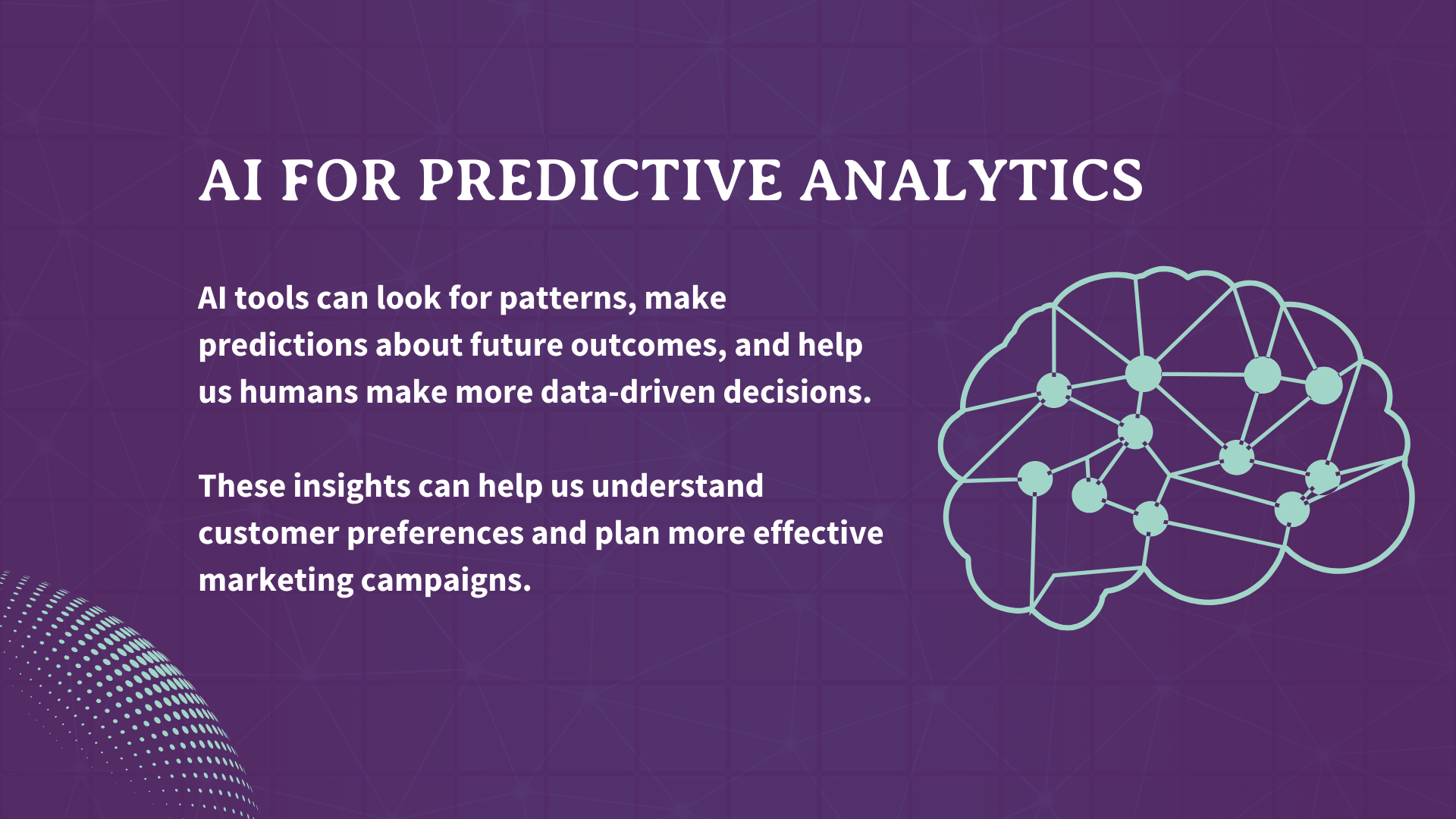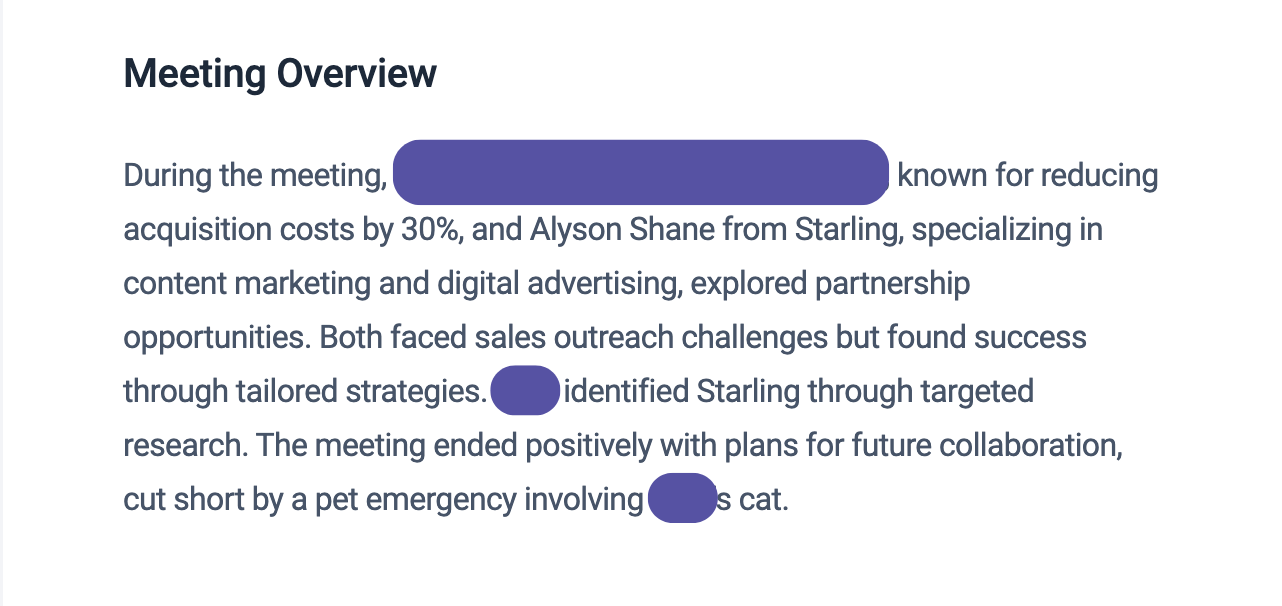The Impact of AI on Digital Marketing Strategies
Lately it seems like artificial intelligence (AI) is everywhere. Whether it’s “imagining” super weird-pictures, answering questions, or generating content, these days it feels like you can’t open an app or browser window without running into an AI tool.
Before we dive into this topic I want to be clear: the current state of AI is not a replacement for human effort and output — but that doesn’t mean that we haven’t been experimenting with it and testing various tools to see how they can help us deliver better results for our clients when possible.
Here are some ways the Starling Social team and I are seeing AI’s impact on the world of digital marketing:
Personalized Customer Experiences
AI-powered algorithms can learn a lot about us in a frighteningly short amount of time by analyzing things like our browser behaviour, buying history, and other preferences to deliver highly personalized content and recommendations.
By using AI, businesses can offer targeted product suggestions, customized offers, and even tailor communication strategies to encourage higher engagement rates and conversions.
We’re also seeing a rise in AI-powered chatbots that go beyond your typical canned responses — these tools can understand context and provide personalized assistance for users who need it.

Predictive Analytics
Here’s an area where we’ve been seeing a lot of positive use cases for AI tools!
Since AI can quickly analyze huge amounts of data, businesses can use it to look for trends in consumer behaviour and in the market more broadly.
AI tools can look for patterns, make predictions about future outcomes, and help us humans make more data-driven decisions.
These insights can help us understand customer preferences and plan more effective marketing campaigns.
Automation in Marketing Campaigns
AI tools can help with strategic decision-making when it comes to managing the mundane parts of a marketing campaign.
AI-powered tools can analyze past user behaviour and figure out things like the best time to schedule a social media post, to scheduling emails at times when readers are most likely to open them, and even when someone should see your ads (more on that below).
Improving Productivity
Recently I was on a Zoom call with another agency owner who mentioned that they were using a tool called FireFlies AI during our meeting.
This cool AI tool not only emails meeting participants a transcription of the meeting but also puts together a handy summary of the meeting as well. Check it out:

Content Creation
If you follow us at all then you know we have thoughts about this — and they aren’t positive.
Basically, the current generation of AI isn’t able to replicate the kind of high-quality content that humans are able to write and think up.
If you don’t live and breathe this industry, then you’ve probably read AI-generated content and not been able to tell the difference, but I studied rhetoric (persuasive writing) and have been publishing content online for 22 years, and believe me, once you start seeing the patterns in AI-generated content it becomes infuriatingly bad.
Everything starts to sound same-y, repetitive, and clunky. Often tools like ChatGPT and others will use language that doesn’t “sound” like the way people regularly speak.
To those of us who live and breathe this industry, AI-generated content sounds like nails on a chalkboard.
As it stands, we don’t recommend using AI tools for your business and content needs.
How to Spot AI-Generated Content
Let’s take a second to cover some patterns to look for in AI-generated content so you can start to understand how badly the current state of AI is “flattening” content online:
Objectivity
AI loves to add subjective claims to the copy it generates, so keep an eye out for copy that gushes about why something is important, relevant, or timely to the reader.
When reading copy, ask what in the following text supports a statement that something is:
- Impressive
- Thought-provoking
- Unique
- Noteworthy
- Remarkable
- Comprehensive
- Holistic
- Impactful
If there aren’t concrete examples, like explaining why something is “unique” compared to something else, then it probably wasn’t written by a human.
Passive Voice vs. Active Voice
The most effective copy is written in an active voice, but AI tends to write in a passive voice which can be a dead giveaway. Here’s an example of what I mean:
- Passive voice: The project was led by our CEO, Steve.
- Active voice: Our CEO Steve led the project.
Active voice in writing is more impactful, uses shorter sentences, and tends to be clearer — something the current generation of AI isn’t great at, yet.
Logical Correlations
Keep an eye out for phrases like “as evidenced by” because typically if AI is generating the copy, the first part of the statement won’t be supported by objective evidence.
Structural Clichés
This is one of those things you can’t “unsee” once you start noticing it. Look for structural clichés like:
- In this fast paced world
- It is important to note that
- In the dynamic world of
- A treasure trove of
- Embark on a journey
You can find a longer list of overused AI generated phrases here.
Repetitiveness and Verbosity
When AI generates copy that says something like “the new process effected transformative change” it should actually be written as “the new process transformed X.”
This is one of my biggest pet peeves with AI-generated content; it’s super verbose and if you read it out loud, it doesn’t reflect how humans really speak.
Overusing Verbs
AI loves to lean on specific verbs because they’ve been overused in business for decades. This tends to make the copy sound clunky and tired. A few examples to look for include:
- Delve
- Foster
- Ensure
- Tapestry
- Transform
- Leverage
- Revolutionize
- Captivate
You can find a list of even more overused AI words here.
Improved Pay-Per-Click (PPC) Results
We’ve been experimenting with Google’s AI tools to enhance our clients’ PPC campaigns and seeing great results… sometimes.
We’ve been running small A/B tests instead of applying AI to the full campaigns, since sometimes the AI makes choices about targeting and keywords that aren’t related to our campaigns (not good!)
While AI has certainly enhanced the return on investment (ROI) of some of our campaigns, we definitely need to make sure we’re keeping an extra-close eye on the campaigns that are AI-powered since we often have to go in and tweak things to keep the tests running smoothly.
Advertising Targeting
Machine learning algorithms can analyze user demographics, behaviour, and interests and show highly targeted ads to people who are likely to be interested in what you offer.
In theory, this can help you reach more of your target audience, increase your ad relevance (showing ads to the right people at the right time), and can reduce ad spend across the board.
Note: we’ve been experimenting with Meta’s AI-powered targeting and have found that our humans-led targeting is outperforming AI-powered ads in all metrics. This may change, but right now we recommend a human-led approach to your targeting!
AI and Your Digital Marketing
There are lots of ways that AI is changing the world of digital marketing for the better, and some ways where it’s a substitute for corner-cutting.
This is likely to change as the tools continue to learn, iterate, and become more sophisticated, so it’s something that we’ll be keeping an eye on, and you should, too.
If you’re looking for high-quality, human-created content for your marketing plan, reach out today! You can also subscribe to our weekly newsletter for all the latest news, updates and strategies in the world of digital marketing.

